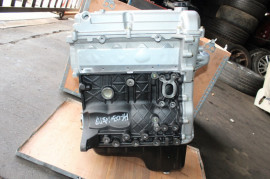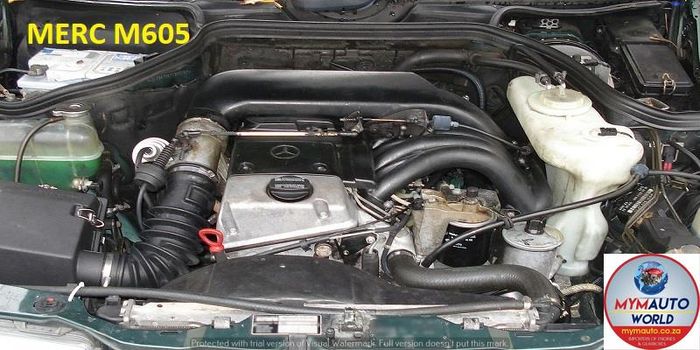Finding the most effective Deals on Opel Corsa Engine Parts
Finding the most effective Deals on Opel Corsa Engine Parts
Blog Article
Checking Out the Inner Functions of a Compact Car's Engine System
As motorists, we typically take for approved the detailed procedures that take place within the confines of our vehicle's engine system. In this expedition of a portable automobile's engine system, we will unwind the internal operations of this mechanical harmony, dropping light on the mysteries that drive us forward on our day-to-day trips.
Burning Process Review
The burning procedure in a small car's engine system is a critical device that successfully converts gas into energy to power the car. This procedure happens within the burning chamber of the engine, where fuel and air mix, stir up, and create regulated surges. The burning process includes 4 major stages: consumption, exhaust, compression, and power.
During the consumption phase, the piston moves downward, drawing in a combination of air and gas right into the combustion chamber. The next stage, compression, entails the piston moving upwards, pressing the air-fuel blend to increase its strength. Consequently, in the power phase, the stimulate plug stirs up the compressed mix, causing a fast expansion of gases that requires the piston back down. This downward motion produces the power required to drive the vehicle. In the exhaust phase, the scorched gases are removed from the burning chamber with the exhaust valve, preparing the chamber for the following cycle. This cyclic burning process is essential to the procedure of a small car's engine system, making certain effective power conversion for propulsion.
Piston and Cylinder Interaction

The piston's specific fit within the cylinder is important for preserving optimum compression and avoiding energy loss throughout burning. Limited clearances in between the piston and cylinder walls make certain effective sealing, enabling the piston to relocate efficiently without enabling gases to leak past. Appropriate lubrication is likewise crucial to lower friction and put on in between these parts, enhancing longevity and efficiency.
Moreover, the layout and materials made use of in producing the piston and cyndrical tube impact engine efficiency and sturdiness. Modern engines commonly use light-weight yet durable products like light weight aluminum alloys for pistons and cyndrical tube liners to lower inertia and improve thermal performance. On the whole, the unified interaction in between the piston and cylinder is basic to the engine's capability and general performance.
Gas Shot System Capability
Fuel injection systems in portable automobile engines play a crucial function in precisely delivering fuel to the burning chamber for reliable and controlled ignition. The gas shot system functions by injecting gas into the burning chamber at the optimal minute throughout the engine's procedure (opel corsa engine). This specific timing makes sure that the fuel mixes uniformly with the air for proper burning, resulting in improved fuel efficiency and reduced discharges
There are primarily two kinds of fuel injection systems utilized in portable car engines: port fuel shot (PFI) and straight fuel injection (DFI) PFI systems infuse fuel right into the intake port prior to the intake valve, while DFI systems infuse fuel directly into the combustion chamber. Both systems have their advantages, with DFI providing far better gas atomization and PFI supplying an extra affordable solution.
Comprehending Engine Cooling Devices
Reliable operation of a small car's engine counts greatly on the efficiency of its cooling systems. Engine cooling is essential to stop getting too hot, which can cause major damages and reduced performance. The air conditioning system in a portable automobile normally includes several elements collaborating to regulate the engine temperature. One critical part is the radiator, which makes use of coolant to take in warm from the engine. As the warm coolant streams with the radiator, it launches warmth right into the air, cooling down before going back to the engine. The water pump distributes the coolant with the engine and radiator, guaranteeing a consistent circulation to control temperature level. In addition, the thermostat assists manage the coolant circulation to preserve optimal engine temperature. Some cars likewise have cooling fans that activate when added air conditioning is required, such as throughout rush hour or heat. Recognizing these engine air conditioning devices is crucial for preserving the performance and durability of a small car's engine system.

Exhaust System Elements Explained
The optimum performance of a small lorry's engine air conditioning systems depends upon a complementary system called the exhaust system, which makes up numerous crucial parts for ensuring effective exhausts and engine performance. The exhaust system consists of parts such as useful reference the exhaust manifold, catalytic converter, muffler, and tailpipe. The exhaust manifold accumulates exhaust gases from the engine's routes and cyndrical tubes them to the catalytic converter. The catalytic converter then converts hazardous contaminants in the exhaust into much less hazardous exhausts before launching them via the web link muffler and tailpipe.
One important component of the exhaust system is the oxygen sensing unit, which keeps track of the oxygen levels in the exhaust gases to help regulate gas consumption and make certain optimum engine performance. opel corsa engine. Furthermore, the resonator might be existing in some exhaust systems to reduce noise degrees. Generally, the exhaust system plays a crucial function in keeping engine efficiency, minimizing unsafe emissions, and guaranteeing a quieter driving experience for compact lorry owners

Conclusion
In conclusion, the compact vehicle's engine system is an intricate mix of parts that interact to assist in the combustion procedure, convert fuel right into energy, and remove waste gases. Understanding the internal functions of the engine system, consisting of the piston and cyndrical tube interaction, gas injection system, engine cooling devices, and exhaust system parts, is important for maintaining ideal performance and efficiency of the automobile.
The burning process in a portable automobile's engine system is a critical mechanism that effectively transforms fuel right into power to power the vehicle.Fuel injection systems in portable automobile engines play a critical role in precisely providing gas to the combustion chamber for reliable and controlled ignition.There are mainly two types of fuel shot systems used in portable vehicle engines: port fuel injection (PFI) and direct fuel injection (DFI) Understanding these engine cooling devices is vital for learn this here now preserving the efficiency and long life of a small car's engine system.
The optimum performance of a portable lorry's engine air conditioning systems depends on a complementary system understood as the exhaust system, which comprises various necessary parts for guaranteeing reliable exhausts and engine efficiency.
Report this page